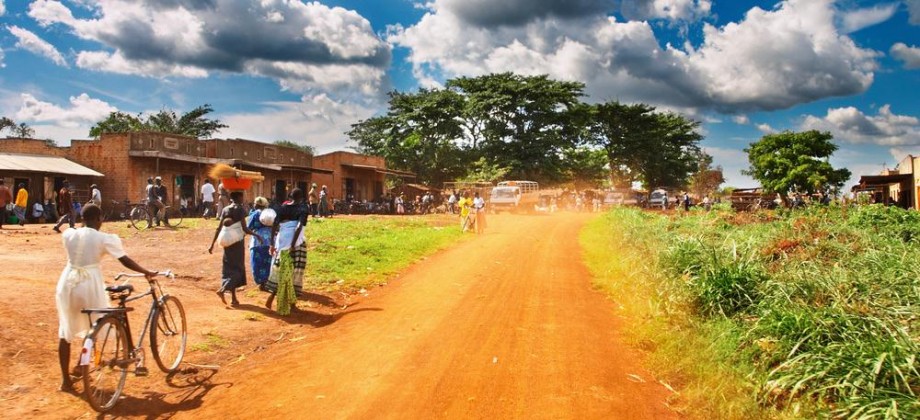Well-intentioned international volunteers often have a counterproductive impact where they go. The experience of volunteering in the community of Tsiroanomandidy, Madagascar, is a useful reference to explore the wider issues surrounding the economic, educational and psychological ramifications of volunteering in the education sector.
International volunteers are considered part of ‘the wider international development agenda’, and it bridges a fundamental gap between ‘hard’ development outcomes and ‘soft’ development outcomes. It is a human-centred, bottom up approach to development aimed at benefitting communities in a vast range of sectors, including sustainable development and education. International volunteering is particularly active in the education sector, with an influx of volunteers providing services in schools, youth centres and educational programmes. As education is a fundamental dimension in the Sustainable Development Goals, the role played by international volunteers is pivotal: key skills, languages and teaching methods are transferred and applied to local communities. And yet this unilateral service does not go uncriticised. There are contentious debates with regard to the long-term effects on local communities. These include increased unemployment, disruption in the academic sphere, and psychological ramifications from disillusion and lack of faith in local initiatives.
Ambiguous Economic Outcomes
Many volunteer organisations insist on the direct economic benefits of foreign volunteers for local communities. The increase in revenue from these volunteers facilitates local employment, and there is no doubt that in many cases, these outsiders contribute to improving local facilities, such as youth centres, schools and libraries. An important argument used to justify international volunteering is that it benefits the local community economically, thus increasing the standard of living of local residents. However, the economic implications of international volunteering are more complex than what the immediate effects might convey. In order to send and receive international volunteers, time, money and resources are spent to ensure the smooth running of the volunteering process, resources that may well be spent on local initiatives, development and residents.
Although there may be a slight increase in local employment due to the injection of revenue, the long-term effects reveal a darker side: a constant stream of international volunteers in a community means that these outsiders continually usurp the roles and posts that would otherwise be allocated to locals. Volunteer placements take precedence over local workers, which means that much-needed jobs become less available. If volunteers are unskilled and untrained, as is often the case, it is even likely to cause more hindrance than assistance to the host community. There is a risk of international volunteers becoming the teachers, doctors, construction workers, project developers rather than assistants in each field. In those cases, they assume the characteristics of experts and leaders, rather than learners and students, giving a helping hand while absorbing their new environment and learning the ways of the local community. The skills provided may appear beneficial in the short term, but how are the locals to practice their skills and build up their experience if they are never given the chance?
Educational Setbacks
While the economic outcomes of volunteering are ambiguous at best, the educational impact is even more worrisome. Education systems, programmes and syllabuses vary from country to country. This makes an understanding of the relevant system one of the most crucial criteria for working in the education sector. A particularly common and unfortunate trend in international volunteering is the act of sending volunteers who have not been fully trained nor coached in the specific needs of the educational system of the host community. This can have multifarious consequences for local communities, especially if the volunteer assumes a more hands-on role.
One of the most evident drawbacks in the system is the problematic timing of many volunteers: schools have a set academic schedule with a fixed syllabus. Nevertheless, many volunteers are often not only unable to stay for the duration of the academic term or year, but also tend to arrive after the academic year has started, or in the middle of a semester. The importance of routine, continuity and consistency is paramount for effective student learning and progress; so how can this service – which entails a regular turnover of volunteers with disparate arrival dates and varying timeframes – be an efficient strategy in the education sector? If anything, the pattern of volunteering can be detrimental to the pupils’ learning.
This danger was evident with respect to the educational volunteering service in the rural community of Tsiroanomandidy: a new person entering the classroom triggers a change in dynamic; valuable time is used to ‘break the ice’ and connect with the class and understand the needs of the students. The teachers often spend time explaining the syllabus, what has been taught and what the students have yet to learn, and this time-consuming process leads to an interruption in the calendar, a disruption in the teaching, and subsequently an interference in the learning. Furthermore, when volunteers in Tsiroanomandidy stay to teach for varying timeframes, these disruptions can occur biweekly to every six months; as the schools and teachers are often uninformed with regard to volunteer timeframes and arrival dates, this contributes to an environment of uncertainty and unpredictability.
Another glaring issue with the inconsistent nature of the volunteering service in Tsiroanomandidy is the disruption of the syllabus content and teaching methods. For example, volunteers from some organisations have a one-day training course before visiting the schools and meeting the teachers. This course consists of practical activities and songs with only one focus: primary students. Considering volunteers teach in primary as well as secondary schools, youth centres and clubs for working adults, this training day hardly scrapes the surface. With little information on the syllabus, volunteers are expected to jump in, take the lead and teach courses they are not familiar with. This inevitably leads to volunteers creating their own lesson plans, often misjudging the students’ level, and generating content which is incongruous with the school curriculum. Furthermore, each teacher has a specific teaching style, and this crucial skill needs to be acquired as a trained and qualified teacher in order to maintain consistency and coherence.
The dangerous combination of inexperienced volunteers, underdeveloped teaching styles and incompatible teaching methods create a fragmented learning experience for the students. The hindrance this can cause to the students’ learning and understanding of the respective subject must not be underestimated. The process of learning is parallel to building blocks: strategic steps must be taken to ensure students build up their knowledge at each level. Disruptions in the syllabus, the timeframe, the teaching styles and the content will only serve to confuse and impede their development.
Disregarded Psychological Consequences
In addition to the contentious effects on the educational dimension of communities, there is also a psychological factor that needs to be considered. This aspect is a fundamental, yet often unstated dimension of international volunteering. As volunteers become a regular presence in the classroom, students begin to connect and accustom to their voluntary teacher. A relationship is formed between volunteer and student that can even transgress the traditional teacher-student relationship. In Tsiroanomandidy, volunteers are not only welcomed, but become a novelty in the community. Children know and call out volunteers’ names in the streets; students, enthusiastic about their new teacher and intrigued by the volunteer’s alien status, attempt to form bonds instantaneously. The volunteer, eager to gain a better cultural understanding of the community, connects with students and adults outside as well as inside the classroom, by taking part in community events, extra-curricular activities and learning the local language. The emotional ties that are typically formed between the volunteers and local residents can be beneficial on multiple levels, especially for the volunteer. However, the departure of volunteers can cause deeper ramifications for the local community, especially for the students. The natural progression in education is that students learn, advance and achieve. Each year they leave their teacher behind and move on to the next stage in their education. In this case, however, volunteers leave their students behind. This can create a sense of abandonment, invalidation and stagnation.
For many local communities, international volunteering is a normalised process, and they even act as role models to the local community. However, international volunteers are also perceived as outsiders, and the notion of outsiders acting as role models is problematic. It makes students in schools and youth centres accustom to this dynamic and perceive the outsiders as superior and better role models than the local teachers. This attitude towards volunteers and the mistrust in local alternatives is damaging for both students and teachers, and especially detrimental to their self-esteem. A key drive in development is upholding confidence and value in the community, and in order to reverse this damaging dynamic, it is important that volunteers are not just outsiders, or perceived outsiders, but that volunteers are also local. Initiatives to encourage local residents to volunteer can increase self esteem, dismantle the unilateral pattern of volunteering and restore faith in the local community.
The assessment of international volunteering impacts on local communities is not one-dimensional: the many factors that come into play, including the community, its specific needs, the timeframe and skill set of volunteers, result in complex economic, emotional and psychological impacts. Its detrimental implications are often underestimated, even if it is rooted in good intentions. This is especially visible in the education sector. There exist situations in which volunteerism is positive and even a necessary tool in the hands of local communities. One example of this is is the socio-cultural centre Bel Air in Tsiroanomandidy, operated by the Bongolava Antsitrapo Association who succeed in sustaining a local led nature of these activities. In their case, they continue to employ a bottom up approach, always focussed on listening and implementing local ideas. But this is the exception rather than the rule, and great care has to be taken to ensure that volunteers are properly trained, and are aware of their roles and potentially negative impact on communities. The role of a volunteer is not to be a pillar of the education system, but to assist, support and encourage local capacities. Furthermore, volunteerism from local communities themselves needs to be expanded. Local initiatives and local expertise are typically free from the pitfalls of international volunteering, and directly strengthen the long-term capacity of recipient communities.










